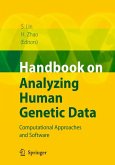This model has been successfully applied in various conditions, including inborn errors of metabolism, primary immunodeficiency, and endocrine disorders. However, integrating metabolomics with other omics datasets and clinical phenotypes requires careful study design, analytical tools, and data analysis and interpretation.
This groundbreaking new book provides essential guidance for researchers, students, and professionals looking to leverage metabolomics in their own work, including biochemical and clinical geneticists, pharmacogenomics and pharmacometabolomics experts, pharmaceutics and diagnostic researchers, medical scientists, clinical dietitians, metabolic engineers, clinical chemists, and personalized medicine specialists.
Dieser Download kann aus rechtlichen Gründen nur mit Rechnungsadresse in A, B, BG, CY, CZ, D, DK, EW, E, FIN, F, GR, HR, H, IRL, I, LT, L, LR, M, NL, PL, P, R, S, SLO, SK ausgeliefert werden.









